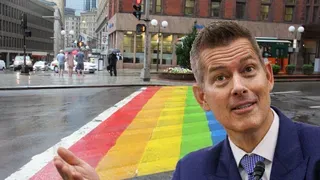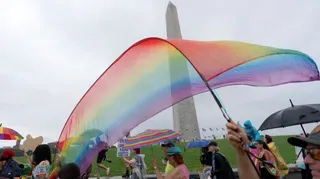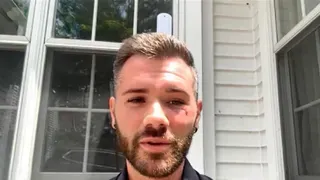July 26, 2012
AIDS Memorial Quilt: A Patchwork of Personal Memories
Chris Sosa READ TIME: 3 MIN.
I really don't remember the early days of the AIDS crisis. Thirty years ago, I was barely a teenager living in a small town in Missouri. The mysterious disease was striking down gay men and there certainly weren't any gay men in the heartland. Gay men lived in cities like San Francisco and New York City. And, at the time, even the President of the United States refused to acknowledge the problem.
Unlike me, there are many friends and neighbors in South Florida who have vivid memories of the early days forever burned in their memories. Many lived in the seemingly free world of the Castro and Greenwich Village, others were scattered across the country. All woke up each day, fearing they might be the next to succumb to the agonizing, prolonged deaths occurring around them. An entire generation was lost to the virus in that first decade.
Even as a college student, years later, AIDS was still a "gay" disease. The only straight people at risk were the morally challenged intravenous drug users who somehow deserved it, at least until an innocent child, Ryan White, was infected, creating an outcry that finally mobilized a nation.
Coming out in Washington, D.C. in the early '90s, HIV/AIDS became more real. Ironically, I had not lost any friend or even acquaintance to the disease until 1995. The anti-viral "cocktail" had just been introduced, and despite the challenges of a complicated schedule of pills throughout the day, there was hope HIV would become a manageable, chronic condition.
And, for relatively well-off gay men with access to health care and the services of organizations like the Whitman-Walker Clinic in Washington, Gay Men's Health Crisis in New York and Care Resource in South Florida, among others, the disease has become manageable. But, make no mistake, it was no longer a gay disease, as the virus began to ravage sub-Saharan Africa and rip apart families in our own urban centers.
The AIDS Memorial Quilt became a symbol for those souls lost to the disease, a lasting-and living-tribute to the victims of HIV/AIDS. I missed the first major display of the quilt on the National Mall in 1997 because of a trip to visit my family, so it was imperative that I make the pilgrimage back to see it this time, an older, wiser gay man who had lost many more friends over the following years.
Washington, D.C. was abuzz over the International AIDS Conference set to convene this week. Posters were everywhere (along with plenty of ads for HIV drugs) and the entrances to the many hotels were crowded with delegates from around the world, many allowed to enter the U.S. for the first time since President Obama lifted the ban on HIV-positive visitors. Most importantly, the chatter was filled with talk of hope, for the first time, sharing a vision of an AIDS-free generation.
Down on the Mall, as volunteers began to assemble thousands of quilt panels across the expanse, I was reminded again how the situation has evolved. Washington, D.C. (along with South Florida) has one of the highest infection rates in the country and, years ago, where panels were being assembled for gay friends and relatives, a group of African-American women was sewing new panels for their husbands and children, many recently lost.
Technology has also transformed the experience as volunteers used touch screens and an Internet app to help educate visitors about the history of the epidemic and locate the panels painstakingly sewn in honor of their loved ones. I managed to find the panels created for a couple special friends in my life and it was a touching moment.
There were tears all around, but also a sense of optimism that a horrible disease that transformed the gay community, our nation and the world would be conquered, especially as the clouds began to lift over the Mall and the sun finally beamed down from heaven. Most importantly, The AIDS Memorial Quilt is the tribute to those who inspired us to eventual victory.





